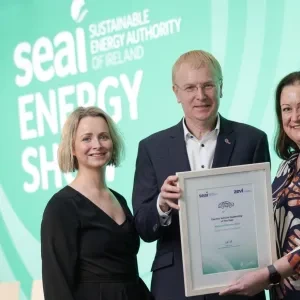Can Your EV Power Your Home During a Power Cut?
Yes— electric vehicle (EV) owners can use their cars as a power source during power cuts, but it depends on the type of EV you have and the right equipment.

How Does It Work?
Some EVs come with a feature called bidirectional charging, or vehicle-to-home (V2H) technology. This allows your car to send electricity back into your home’s electrical system. Not all EVs have this capability yet, but a few models—such as the Nissan Leaf, Ford F-150 Lightning, and Hyundai Ioniq 5—already support it.
What Do You Need?
If your EV supports bidirectional charging, you’ll need:
- A bidirectional home charger – to transfer power from your car to your home
- A home energy management system – to distribute the electricity safely
- A qualified electrician can set up the system to work with your home’s power supply.
How Long Can It Power Your Home?
A typical EV battery holds 40–100 kWh of energy. To put that in perspective:
- A small EV (40 kWh) could power essential appliances for a day.
- A larger EV (80+ kWh) could keep an average Irish home running for two days or more.
- If you only power essentials—like lights, the fridge, and phone chargers—you can stretch the energy even further.
How Do You Use It?
If your setup is ready:
- Plug your EV into your bidirectional charger when the power goes out.
- Activate the backup mode on your home’s energy system – this isolates your home from the grid connection while you are powering your home from your vehicle and is an essential safety mechanism needed in order to manage vehicle-to-home charging.
- Your car’s battery will start powering your home, keeping critical appliances running.
- Once the grid is restored, the system automatically switches back to mains power.
What If My EV Doesn’t Have Bidirectional Charging?
If your EV doesn’t support V2H, you can still use it for emergency power. Some EVs, like the Hyundai Ioniq 5 and Kia EV6, have vehicle-to-load (V2L) capability, which lets you plug in devices directly using a special adapter. This won’t power your whole house but can keep essentials like a laptop, kettle, or heater running.
Is It Safe?
Yes—if properly installed by a professional. The system ensures your EV and home grid don’t interfere with each other. It also prevents electricity from back-feeding into the grid, which could be dangerous for repair crews working on power lines.
The Future of EV Home Power
Ireland is moving towards smarter energy solutions, and bidirectional charging will likely become more common. The ability to use your EV as a backup power source could soon be a standard feature, giving homeowners peace of mind.
In Conclusion
If you’re considering this technology, talk to an electrician or your EV dealer about what’s available now—and what’s coming soon. Your car might be the best backup power source you never knew you had!


